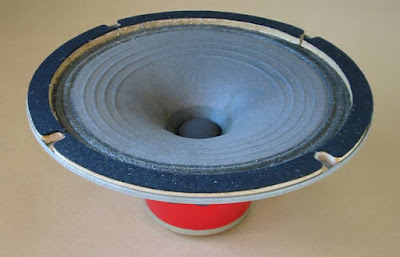Easiest way to know the speaker polarity
Easiest way to know the speaker polarity - On this occasion we will try a very easy way to know the polarity of the speakers..
On the speaker terminal, there is always a polarity mark to avoid errors in installation.
Because if installed with reversed polarity, then the sound generated from the speakers will not maximal.
But how if the mark of polarity is gone?
This time the author will try to share a simple way to know the polarity of speakers.

|
| image: common.wikimedia.org |
Easiest way to know the speaker polarity
Using an AVO-Meter
Positioning scale at x1 ohm.
In this x1 position, AVO-Meter produces 1,5V voltage.
At this voltage range is enough to drive the speaker cone.
And then,
Place two probes of the AVO-Meter (red and black) each of the speaker terminals.
And see the cons movement, If moving backwards, then mark, according to the color of the AVO-Meter probe.
Red probe is (+) and a black probe is (-).
Using battery
We can connect it with enough cable.
Place the cable ends that have been exfoliated on the battery polarity using isolation or other.
And the end of the battery is on the speaker terminal, so does the other pole.
The voltage on this battery is about 1,5V.
Using this battery is inversely proportional to using AVO-Meter.
This cone movement must be forward! If it's like this, then mark the speaker terminal is like the polarity of the battery.
Terminal connected with (+) Battery mark with (+) and connected with (-) Battery mark with (-).
Note,
The battery polarity inside AVO-Meter is mounted upside down with the probe.
Positive pole on black probe, and negative pole on red probe.
So the result is different from using the battery in checking the polarity of this speaker.
Also read: How to care for speakers
Hopefully easy way to know the polarity of this speaker is useful for all readers..

No comments:
Leave a Comment